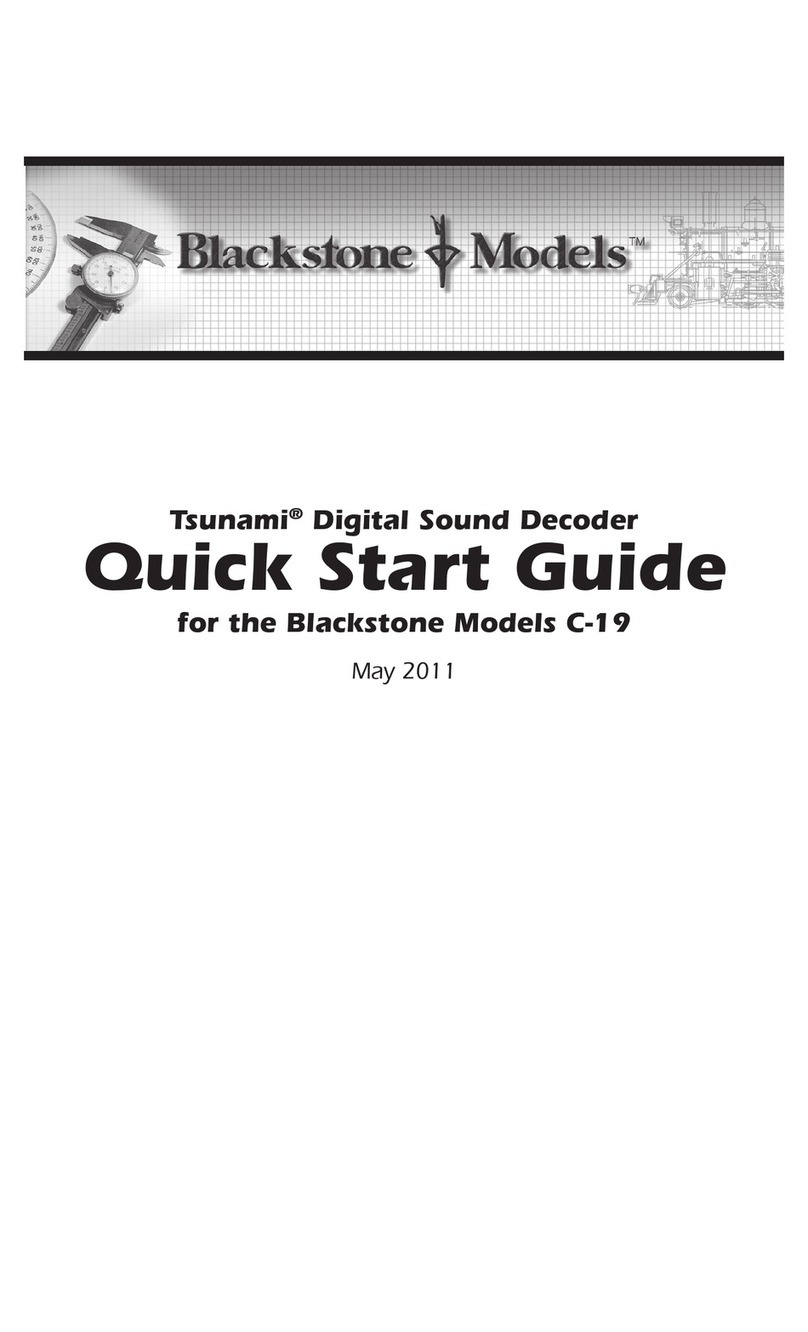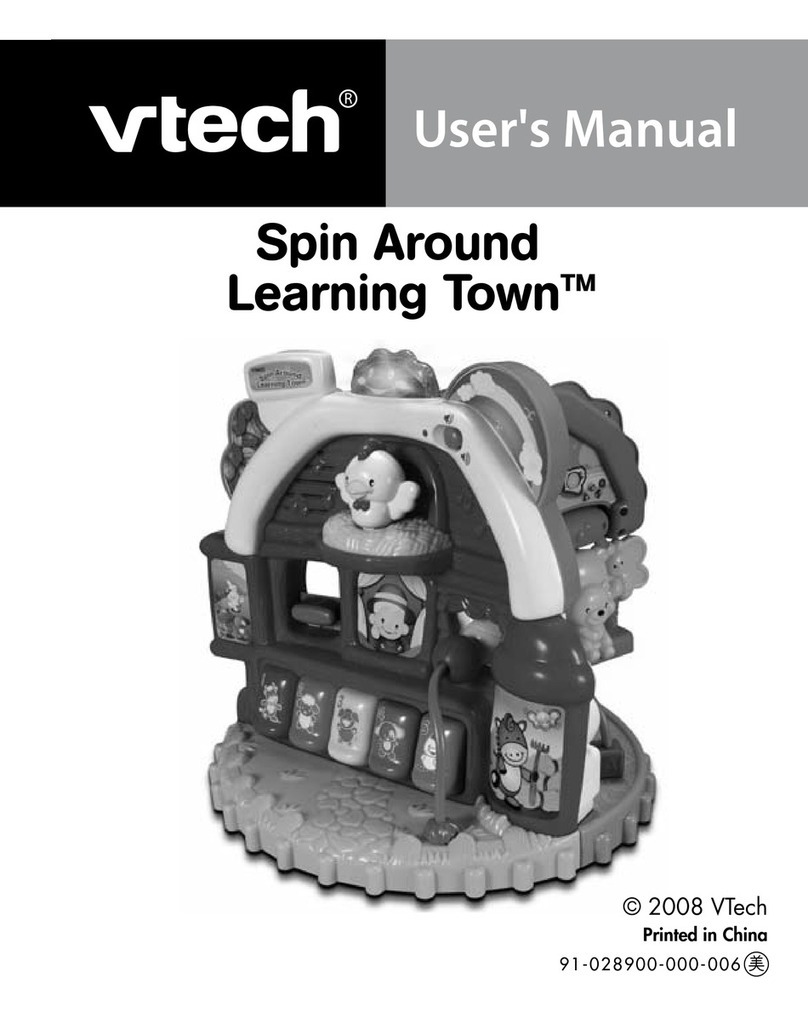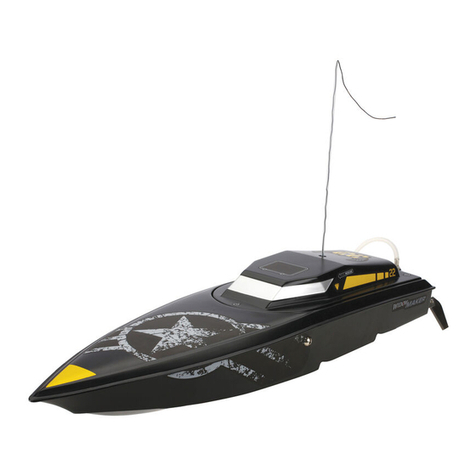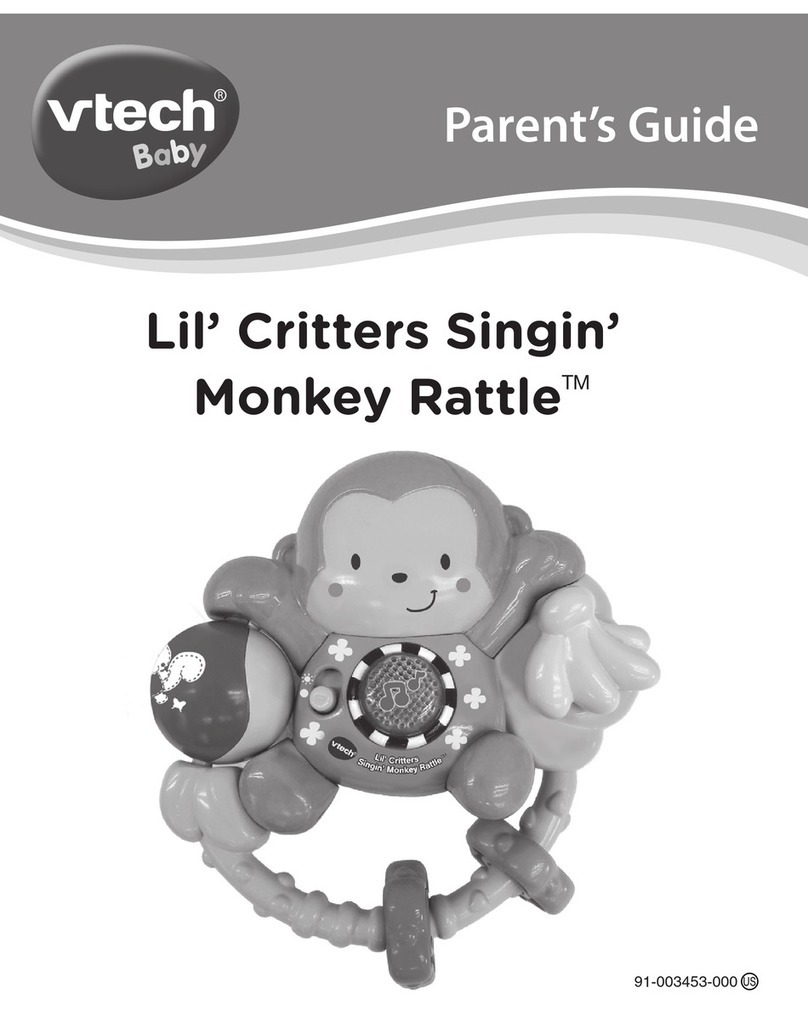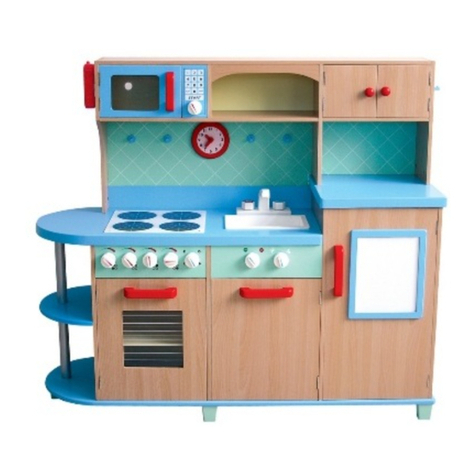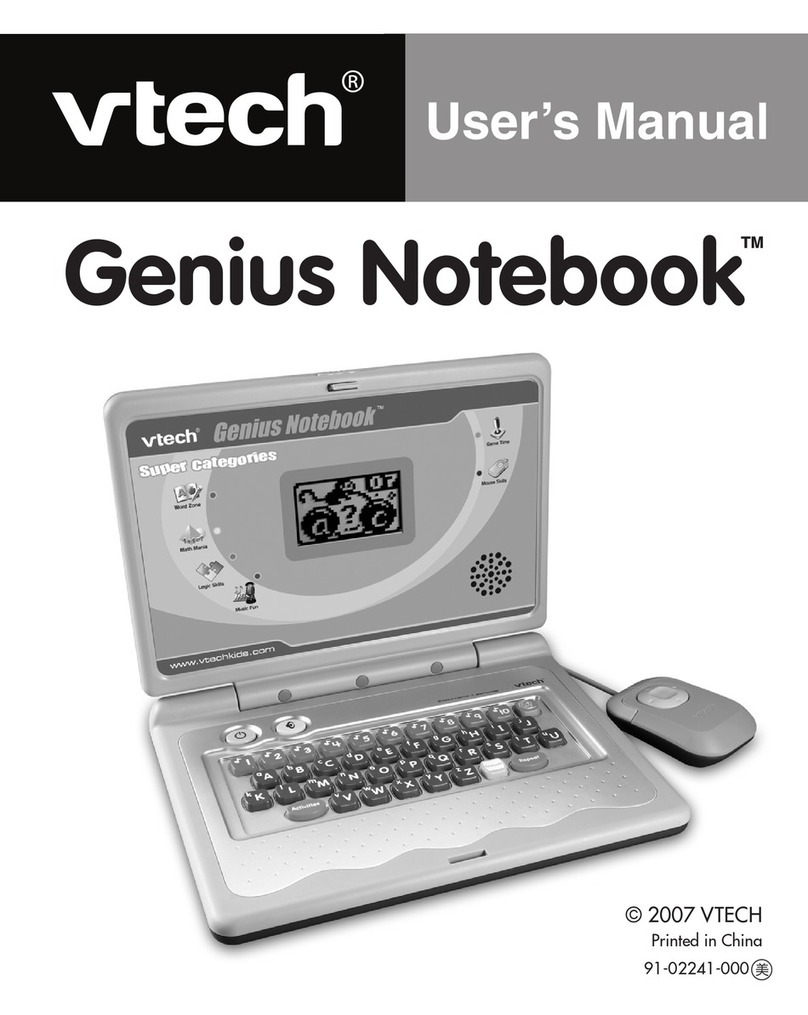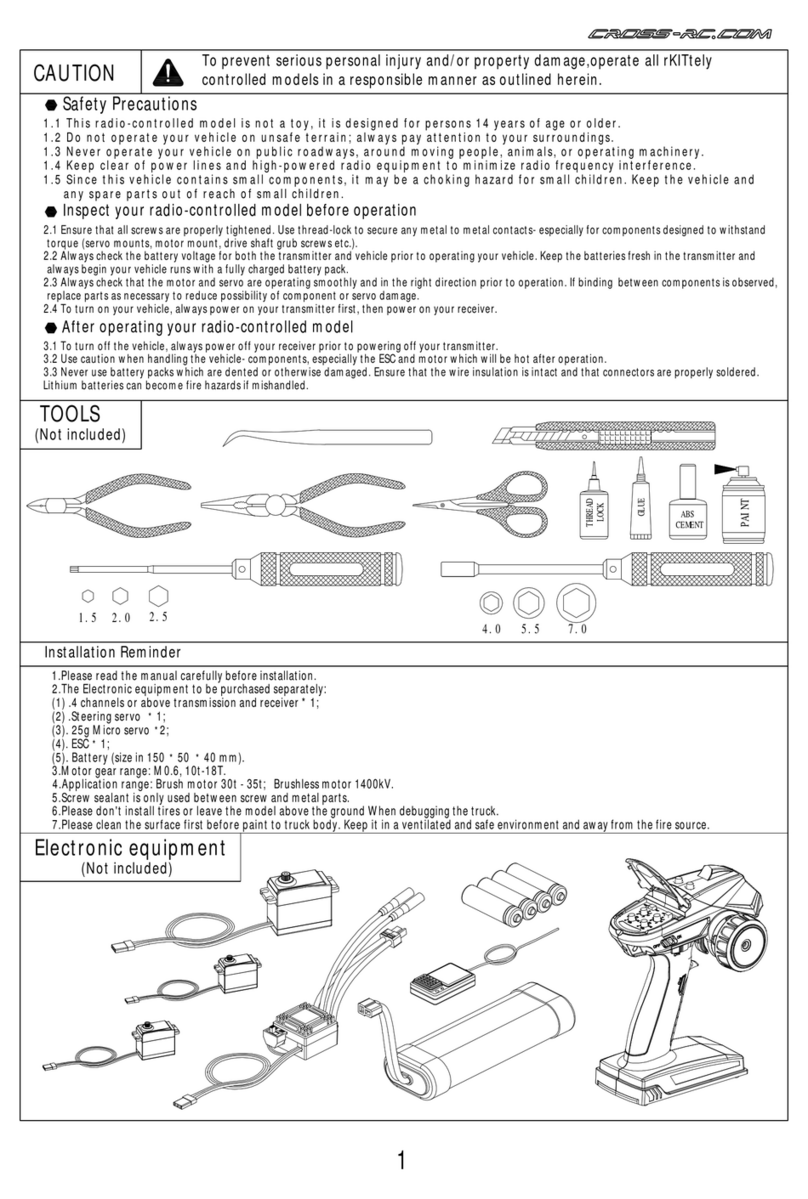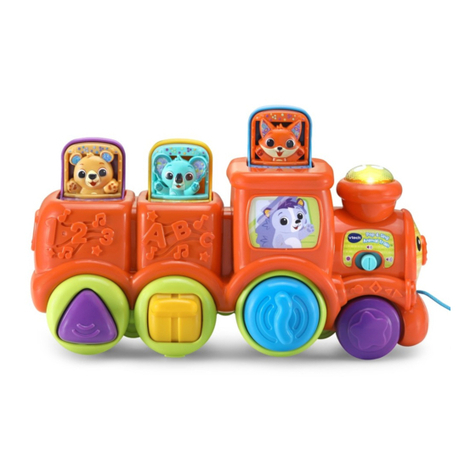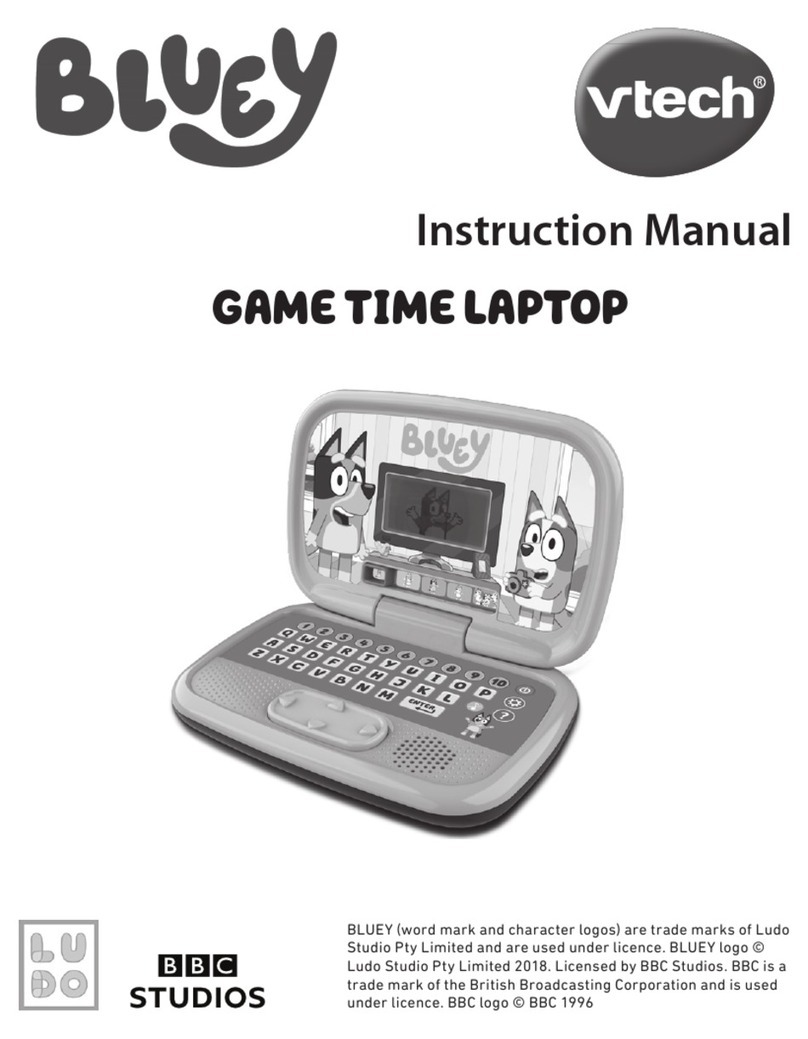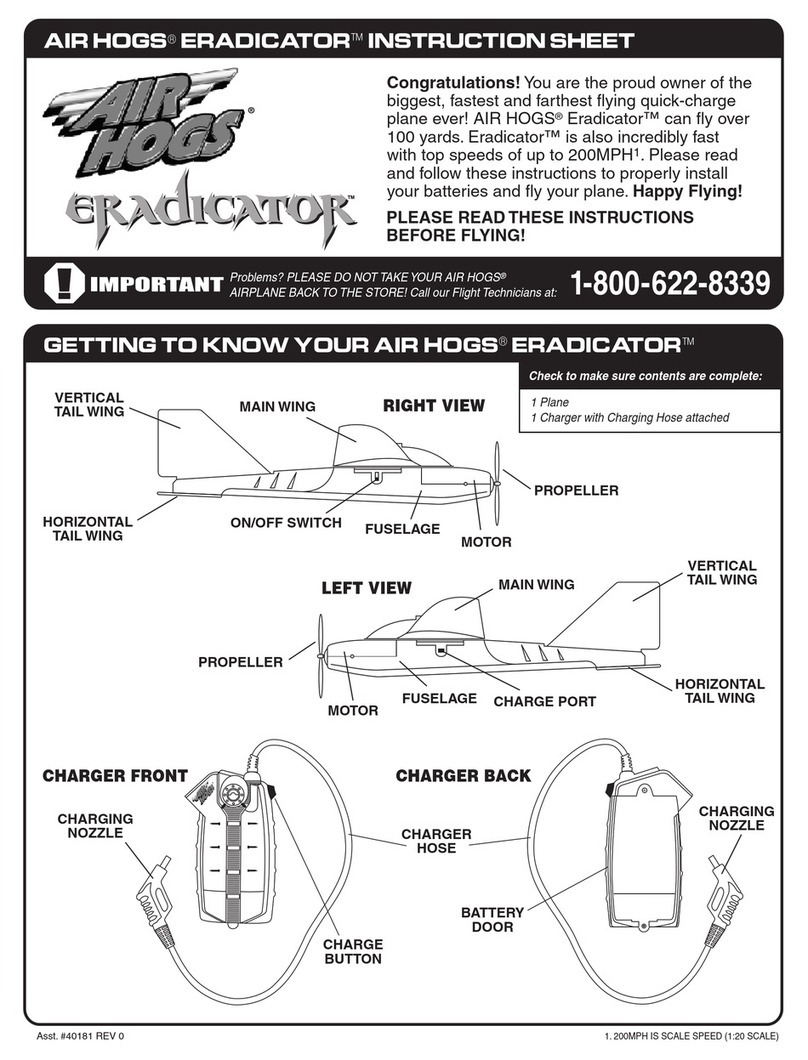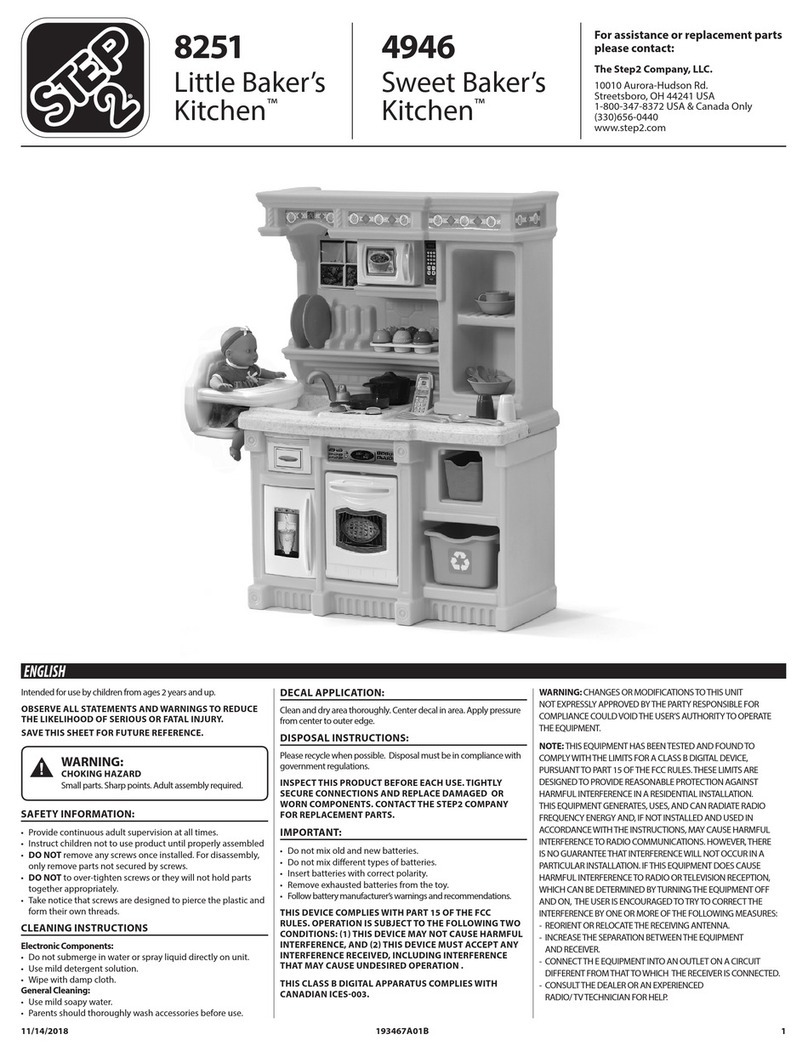Blackstone Models C-19 User manual

Page 1
Operations Manual
Thank you for purchasing the Blackstone Models C-19!
Before your little Consolidation whistles off, we want to tell you about a few
things that will enhance your operating experience and ensure that your
locomotive is maintained for years of pleasure.
We are pleased that we were able to produce some very ne details for this
model. While much of your locomotive is designed with zinc alloy for weight
and reliable operation, be aware that some of the parts are wire, styrene
and celcon. Thoughtful handling of the locomotive right out of the box will
ensure that detail parts are not broken or damaged.
The locomotive and tender are coupled together in the box. Figure 1
shows the best way to hold the locomotive and tender as you move it to
your track. Be sure your hands are free of dirt and oils, or use lightweight
gloves if desired. While the drawbar connection of the locomotive and
tender is of substantial strength, be careful not to twist at the connection
when handling in this manner.
Separating the Locomotive and Tender
The metal drawbar is secured by screws located on both the locomotive
and tender. You may wish to separate the locomotive and tender at some
point. If this is desired please follow these steps:
1. With the locomotive and tender on a soft surface, turn them upside
down and remove the four small Phillips head screws that secure the
tender tank to the tender chassis.*
*It may be necessary to remove the tender trucks from the chassis to access these
screws. This may be done by using a small Flathead screwdriver to pry the snap t trucks
out of the chassis holes. Note: Each tender truck had insulated wheel sets, one pair
for left rail and one for right rail. Always ensure that the trucks are re-installed with the
insulators on the correct side or electrical problems will ensue!
Figure 1 - Handling the Locomotive and Tender

Page 2
2. After lifting the tank off of the chassis use tweezers or a small pair of
needle-nose pliers to unplug the 6-pin connector from the socket.*
*This is the largest connector on the soundboard, (or PCB) located on the end of the
circuitboard nearest the locomotive.
3. With the front tender trucks removed from the chassis, thread the 6-pin
connector down and out through the hole in the bottom of the chassis.
4. Turn the locomotive and tender upside down again, then remove the
small Phillips head screw and washer that secure the drawbar to the
tender.
Detail Parts
Take a closer look in the packaging and you will notice that we have added
a locomotive tool box along with some extra screws. The tool box was
often seen on the pilot deck, rear tender platforms, or behind the coal bin
on top of the tender. For an example of placement options, Robert Grandt’s
“Narrow Gauge Pictorial” Volumes I and XI are excellent photo resources
for placing specic details. We recommend the use of RTV silicon to attach
this piece as it will allow easier removal at a later date. ACC glue is best if
you wish to permanently afx the tool box.
While each C-19 has been test run at the factory, a little break-in time is
always a good idea to enhance the running qualities of your engine. We
recommend operating the locomotive for approximately 2-3 hours using
both directions at varying speeds. We have designed your locomotive for
smooth operation and consistent electrical pick-up. In order to enhance
your operation, ensure that your locomotive and tender wheels, as well as
your track, is kept clean on a regular basis.
Maintaining your Locomotive
Before you run your C-19 it is best to place some light lubrication on the
rods, bushings, and electrical contact points. The gearbox is lubricated
at the factory and will not need immediate attention. In order to keep the
mechanism running smoothly, please follow these instructions.
After some running time and prior to adding new lubrication, be sure to wipe
off old/dirty oils and grease that have accumulated on the moving parts of
the locomotive. Isopropyl alcohol may be used for this purpose. Always
ensure that any cleaning uids used will not remove any paint or glues from
the model. Remember to periodically wipe the tread of all wheels to keep
them free of accumulated dirt and oil. You may already have a favorite line
of hobby lubricants. If not, Blackstone Models recommends lubricants from
Aero-Car Hobby Lubricants*.

Page 3
*Aero-Car Hobby Lubricants, Inc
P.O. Box 336
Western Springs, IL 60558-0336
www.aerocarlubricants.com
708-246-9027
The following products may be
applied as stated below:
Motor Bearing Lube ACT 2112:
On both sides apply a very small
drop at the union of each wheel and
side rod. (Initially and after every 25
hours of operation). See Figure 3.
Apply to all moving parts on the
crosshead guides as shown in
Figure 4.
Conducta-Lube ACT 3753:
Apply a small drop between the
inside of each drive wheel and the
frame allowing the oil to permeate the
bearing area for each wheel. (Initially
and after every 25 hours of operation,
Figure 5).
Apply a small drop on each of the
four tender axles where the electrical
wiper ngers contact the axles.
(Initially and after every 25 hours of
operation.) See Figure 6.
When re-lubricating this area, check
to see that the wiper ngers are still
properly contacting the wheel axles.
If for any reason one or more of the
wipers are not making solid contact,
remove the axle from the truck frame
by slightly widening the frame and
pulling out the desired wheel set.
Using a small jeweler’s screwdriver
or pair of small tweezers, carefully
bend each wiper nger upward just
enough to where each prong will
Figure 4 - Apply to the crosshead guides and
piston rods.
Figure 3 - Apply lubricant to all
the side rod connections
Figure 5 - Lubricate axle bearings with
conductive lubricant.
Figure 6 - Lubricate tender axles with
conductive lubricant.

Page 4
contact the axles when replaced.
To replace the wheel set, gently spread the truck frame apart and re-insert
in the appropriate location.
Important!
Don’t forget that
each tender truck is
insulated from the
rail on one side. The
wheels on the front
truck are insulated
from the right rail pick-
up, while the wheels
of the rear truck are
insulated from the left
rail pick-up. Please
see Figure 7 showing the proper placement of these insulated wheels
and be sure to replace accordingly. Failure to adhere to this could cause
serious electrical issues to your locomotive. If you have an unexpected loss
of electrical contact after replacing wheel sets, this is probably where you
should look rst!
NG Jell Gear Lubricant ACT 1111:
Inspect the main gears after 50
hours of operation to determine the
need of adding more lubrication. If
you do not see a reasonable lm of
grease on the gear teeth, apply an
appropriate amount to lightly coat
the teeth throughout.
To access the main gears: turn the
locomotive upside down and carefully
remove the ve screws that secure
the chassis plate to the underside of
the frame.* See gure 8.
* Be careful to keep the locomotive upside down! The drivers may come out of the frame if it
is tilted to any extreme.
Note the gears and inspect for lubrication. See Figure 9. This may also be
a good time to clean or lubricate the wheel axles if needed. Remember that
an abundance of grease collecting around the gears in the box will only
attract dirt and other foreign matter. Focus on the gear teeth contact points
and avoid over-lubrication of the gearbox.*
Figure 8 - Remove the five Phillips head
screws on the chassis plate.
Front Figure 7 - Proper placement of insulated wheels.

Page 5
*Applying a very light electrical current to
the locomotive to turn the wheels will help
to spread the grease around the gears.
This is best accomplished after replacing
the chassis plate.
Optional: You may wish to access
the motor for inspection and/or
lubrication around the worm gear, to
do so you will need to remove the
boiler from the chassis as shown
in gures 10 through 15.
Removing the Boiler
Should you desire to remove the boiler from the chassis in order to access
the motor assembly please follow these steps.
1. You may remove the tender from the locomotive as discussed on page
1 of this manual, or simply remove the Phillips head drawbar screw
and washer on either the locomotive or tender connection, then pull the
tender off to view the locomotive backhead.
2. With a small hobby screwdriver or blade, pry the rebox door casting
away to reveal a rear chassis/boiler screw. Remove this screw. See
gures 10 and 11.
3. Using a small Phillips screwdriver,
insert into the smoke stack, nd
the screw, and remove. See
gure 12.
Figure 9 - Inspect gears for lubrication.
Figure 10 - Remove the firebox door casting. Figure 11 - Remove the chassis/boiler rear
screw.
Figure 12 - remove the smokestack/cylinder
casting screw.

Page 6
4. Remove the boiler supports from
each side of the smokebox as
shown in Figure 13.
5. With tweezers gently pull the
reversing reach rod on the right
side and, both of the chest
lubricator lines (wires) from both
the frame and steam chest tops
respectively. See gure 14.
6. The vertical handrails at the
rear of the cab plug into the rear
cab support frame located on
the chassis. These will need to
be replaced in the proper holes
when re-assembling.
7. Lift the front and rear of the
boiler assembly, rocking it gently,
and remove the boiler assembly
from the chassis as shown in
Figure 15. Please note that
cab rear handrails, and cylinder
cock wire attached to the cab
front, all need special care when
separating the boiler from the
chassis.
Accessing the Motor for
Maintenance
Motor Bearing Lube ACT 2112:
If you determine that the motor bearings require lubrication, you may apply
this oil very sparingly to the motor bearings on each side of the motor.*
* Apply this oil only if you notice any unusual noise or drag on the motor due to friction at
these bearings.
Generally the bearings should last for the running life of the locomotive
without supplemental lubrication. Please note that over-lubrication on
motor bearings could potentially shorten motor life as excessive lubricant
may work into the commutator or magnet areas of the motor. Excessive
lubricant in the motor may also simulate a motor overload condition that
interferes with the operation of your Tsunami decoder.
Figure 15 - Lubricate the worm and gears if
needed.
Figure 14 - Remove the reach rod and steam
chest lubricator wires.
Figure 13 - Remove the boiler supports.

Page 7
Procedure for Motor Bearing Lubrication
1. Detach the motor securement clip by removing the Phillips head screw
shown in Figure 16, then remove the small plastic part.
2. Pry the motor away from the
gear box cradle. Note: It may
be necessary to use a small
screwdriver and pry up between
the motor and cradle to lift
the motor out of the gearbox
assembly. (See Figure 17).
3. Place a small drop of lubricant
on the front and rear motor
shafts where they protrude from the bearing as shown in Figure 18.
When performing routine maintenance on your locomotive, remember to
inspect the screws that attach the side rods and various moving parts for
the proper tightness. When re-assembling your locomotive, replace screws
with only enough pressure to ensure that the parts properly contact and
will not work loose. Over tightening of screws could hinder operation and
movement of certain parts, as well as breaking parts made of engineering
plastic.
Thank you again for making Blackstone Models products part of your
model railroading experience! If you have further questions contact us at
This document contains information protected by copyright. No part of this document may be photocopied or
reproduced in any form without the prior written consent of Throttle Up! Corp.
Figure 16 - Remove screw and securement clip. Figure 17 - Remove from cradle.
Figure 18 - Lubricate bearings.

Page 8
TM
A Division of SoundTraxx
210 Rock Point Drive, Durango, Colorado 81301 (970) 259-0690 Fax: (970) 259-0691
©2010 Throttle Up! Corp. All Rights Reserved.
Other manuals for C-19
1
Other Blackstone Models Toy manuals
Popular Toy manuals by other brands

KNEX
KNEX SESAME STREET Neighborhood Collection School Bus Building... quick start guide

Air Hogs
Air Hogs Air Hogs RC Sky Patrol Helicopter instruction manual

PLAYTIVE JUNIOR
PLAYTIVE JUNIOR XXL TRAIN STATION PLAYSET Instructions for use
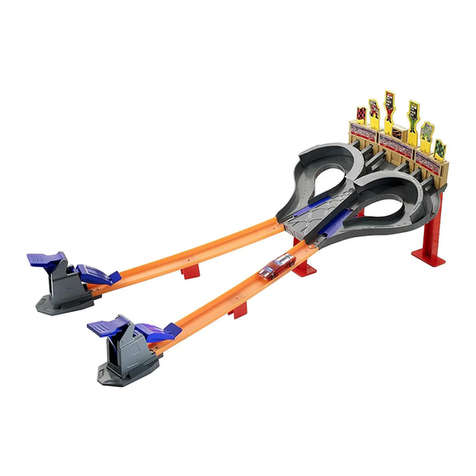
Hot Wheels
Hot Wheels SUPER SPEED BLASTWAY instructions
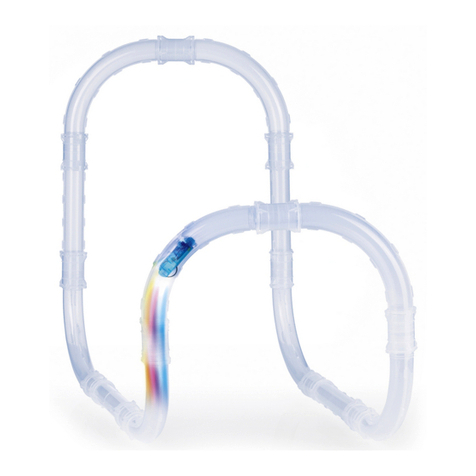
easymaxx
easymaxx MT20188 instruction manual

LaserPegs
LaserPegs NFL003 Team Spirit Assembly instruction
